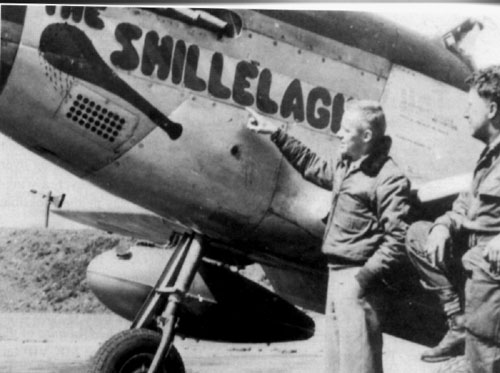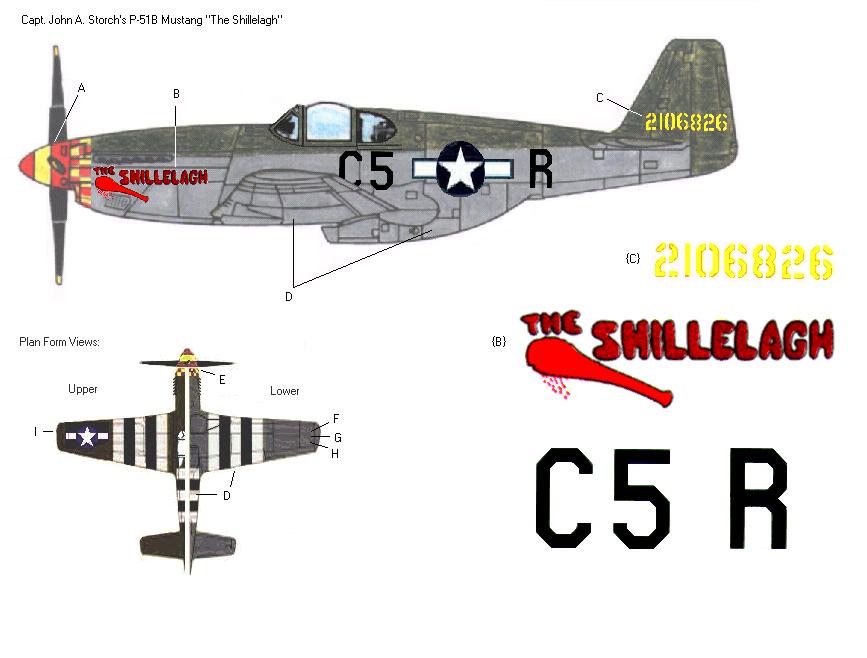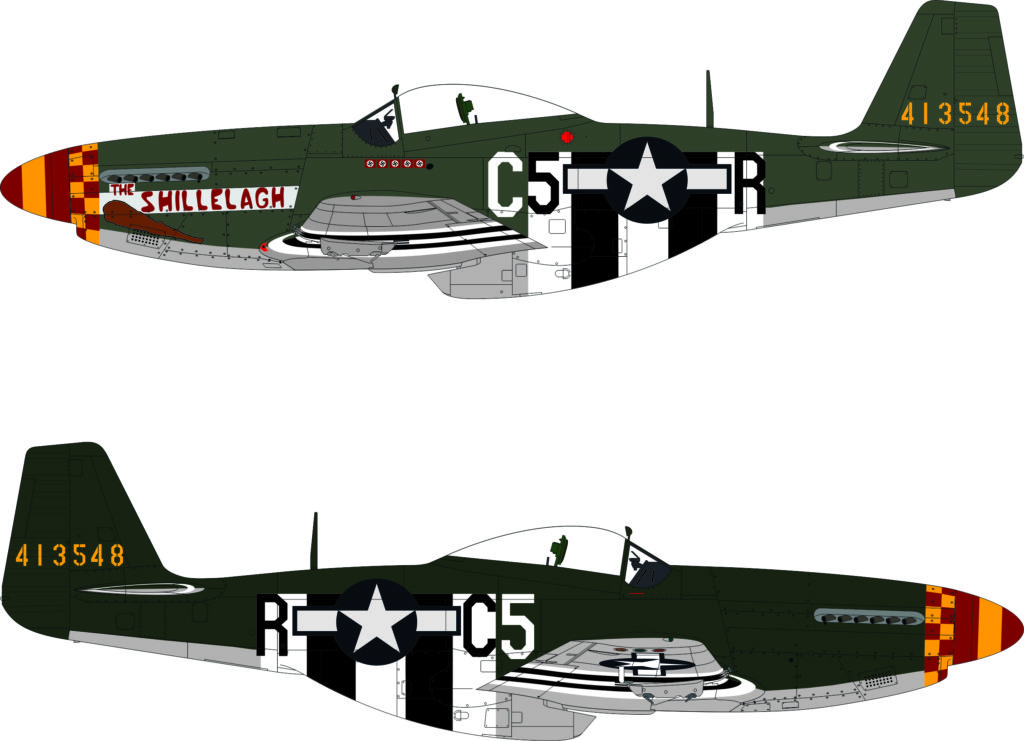357th FG Profile

Major John A. Storch, 364th FS, 10 1/2 Victories

Summer-Fall 1944
Modeler Tips:
Side View Notes:
A. Rear red band on propeller boss extends onto spinner to leading edge of blades when in neutral pitch. Determine width of yellow band by dividing remainder of spinner evenly.
B. “THE SHILLELAGH” in red with a black border slightly offset from lower strip panel. Note that the first word overlaps the upper panel seam, while the bloody war club is tucked in very tightly between the lettering and the perforated panel.
C. Tail number in yellow, “2106” on fin, “826” on rudder.
D. None of the artist illustrations I’ve located of this aircraft display theatre markings. The 357th maintenance personnel were fastidious when it comes to prescribed markings so it is recommended that the modeler apply a full suite of invasion stripes such as appear on the
“Old Crow” and “Hurry Home Honey” P-51B diagrams if the period from June 6th, 1944 to mid-July is desired. For late summer, reduced invasion stripes on lower half of fuselage & on underside of wings is recommended. Many of the P-51B’s wearing reduced invasion stripes also displayed the Spring of 1944 -style white recognition stripes on the upper surfaces of the wings and horizontal stabilizers, in this case with the lower 2/3’s of the aircraft in natural aluminum, such stripes underneath the horizontal stabilizers would most likely have been black.
Upper & Lower View Notes:
E. Width of checker reduced on underside in order to fit evenly on the narrow surfaces of the chin scoop area. F, G, H. Red, Green, Yellow navigation lights- circular and flush with wing panel.
I. Formation Lights- Red (Port) and Green (Starboard)
Overall Modeling Tips:
*This aircraft had modified olive drab upper surfaces, natural metal underneath. Paint on the flat colors first (invasion & recognition stripes, camouflage areas) first- then mask off and paint remainder a natural aluminum color. Most metal colors will be marred or removed by masking materials so it’s often better to leave them for last.
*No mirrors nor antenna wires were installed on this aircraft.
*After building several 357th A/C over the past 30 years, I recommend painting the nose area forward of the exhaust cutout yellow when the flat features are painted. Carefully cut away the yellow squares from the checkerboard decal and apply the remaining strip of red checkers to the nose.. This method significantly reduces the potential for bubbles and wrinkles, plus it makes exact alignment of the decal easier.
*Prior to assembly, wash clear plastic parts with a mild glass cleaner and gently wipe dry. Then use a Q-Tip to evenly spread clear liquid floor wax (Future Brand seems to get the best results) on both inside & outside. Protect from dust and let dry for at least 2 hours. The wax fills in microscopic flaws and creates an even gloss that is clearer & shines brighter than the original plastic underneath

Bullseye Model Aviation Decals – Courtesy of Scott Brown
BMA481009 1:48 Bulleye Model Aviation Decals – P-51D – Yoxford Boys #2

